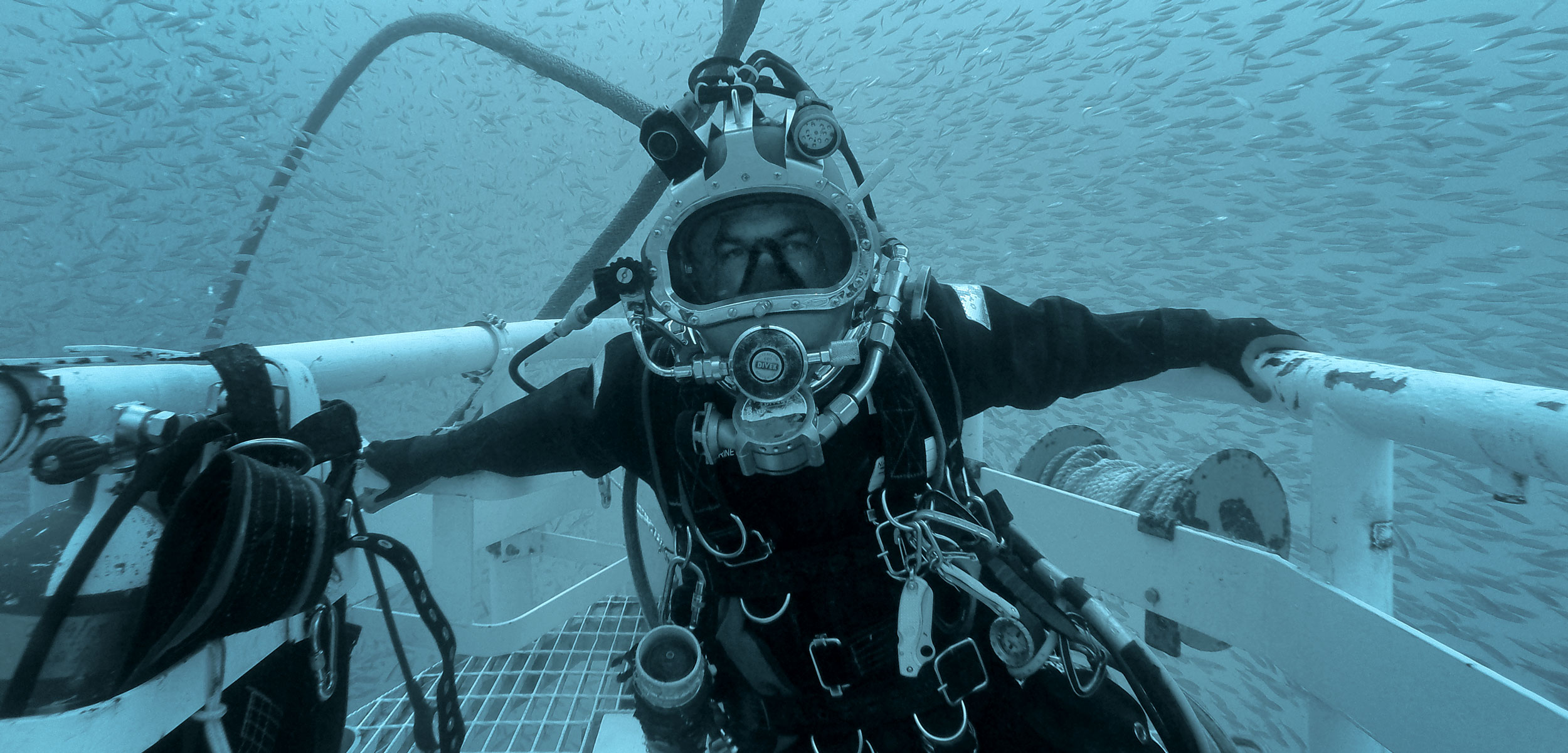Coastal Job: Saturation Diver
A few times a year, Jadon Anderson spends about a month living in a large metal tube with eight other people and diving deep in the ocean to work on oil platforms.
Article body copy
Some people work in cubicles, others work in kitchens, but the most intriguing workplace of all may be the coast. Meet the people who head to the ocean instead of the office in our Coastal Jobs series.
Saturation divers like Jadon Anderson work at great depths for long periods of time. They stay in pressurized chambers and decompress at the end of the job rather than after every dive. This reduces the risk of decompression sickness, a potentially fatal condition.
When I was working as a commercial diver in the Gulf of Mexico, I noticed saturation (SAT) divers living in a chamber about the size of a Volkswagen bus at the surface of the ocean. When they came out of the chamber, I went in to check it out. I sat on one of the bunks and crawled through the hatches, imagining that I was a SAT diver. That’s when I realized exactly what I wanted to do.
SAT divers primarily maintain, inspect, and repair the oil rigs on the platforms at sea. Occasionally, SAT divers work on deep dam jobs or bridge inspections. I’m an offshore diver and work on platforms that are up to 1,000 feet [305 meters] deep.
Saturation divers live in a pressurized chamber that sits inside the middle of a ship or on the surface of the water next to the deck for a maximum of 28 days because the human body can’t endure longer. When it’s time to dive, we transfer into a smaller pressurized chamber called a bell that drops down to the seabed.
There are nine guys in the chamber and we work in teams of three. Two divers go out in the water and work for six hours and the standby diver stays in the bell and comes out if one of the divers needs to be rescued. A diver could be injured, inhale contaminated breathing gas, or lose breathing gas.
Sometimes I feel agitated in the chamber because there’s nowhere to go. There’s a living chamber with the bunks and a small chamber connected to it called the wet pot. The wet pot has a shower, toilet, and small sink. Our meals are sent down from the ship’s galley through a hatch the size of a breadbox. I keep in touch with my wife and 11-year-old son by text or WhatsApp. They send pictures and videos so I get to see my boy playing hockey or baseball.
The neat thing for me is going to a new place at the bottom of the sea that’s never been stepped on before. I get to see some very interesting sea life: big barracuda swimming around teaching their young how to hunt and humongous manta rays with 15- or 20-foot [five- or six-meter] wingspans majestically floating along the seabed. It’s amazing.
I’ve been SAT diving now for 16 years, and I do three or four jobs a year. I still get anxious every time that chamber door closes because I know that I’m stuck in there for 28 days, but it’s a really cool job. There are a lot of people who work in offices, but there aren’t a lot of saturation divers. I take pride in saying that I’m a saturation diver and view it as being at the elite of diving.

